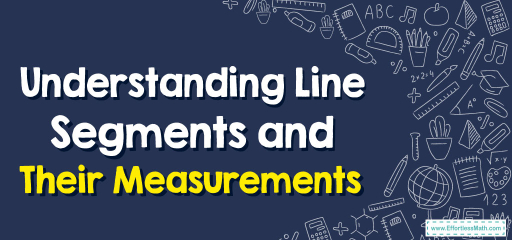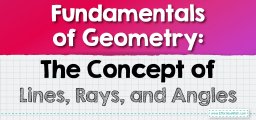Understanding Line Segments and Their Measurements
[include_netrun_products_block from-products="product/6-south-carolina-sc-ready-grade-3-math-practice-tests/" product-list-class="bundle-products float-left" product-item-class="float-left" product-item-image-container-class="p-0 float-left" product-item-image-container-size="col-2" product-item-image-container-custom-style="" product-item-container-size="" product-item-add-to-cart-class="btn-accent btn-purchase-ajax" product-item-button-custom-url="{{url}}/?ajax-add-to-cart={{id}}" product-item-button-custom-url-if-not-salable="{{productUrl}} product-item-container-class="" product-item-element-order="image,title,purchase,price" product-item-title-size="" product-item-title-wrapper-size="col-10" product-item-title-tag="h3" product-item-title-class="mt-0" product-item-title-wrapper-class="float-left pr-0" product-item-price-size="" product-item-purchase-size="" product-item-purchase-wrapper-size="" product-item-price-wrapper-class="pr-0 float-left" product-item-price-wrapper-size="col-10" product-item-read-more-text="" product-item-add-to-cart-text="" product-item-add-to-cart-custom-attribute="title='Purchase this book with single click'" product-item-thumbnail-size="290-380" show-details="false" show-excerpt="false" paginate="false" lazy-load="true"]

Step-by-step Guide: Line Segments and Measurements
Line Segment:
A line segment is a part of a line that has two defined endpoints. Unlike lines that extend infinitely in both directions, a line segment has a distinct beginning and end. It comprises countless points, including its endpoints. For additional educational resources,. For education statistics and research, visit the National Center for Education Statistics.
Example: Line segment \(AB\) is represented by the two endpoints \(A\) and \(B\). For additional educational resources,. For education statistics and research, visit the National Center for Education Statistics.
Measurement of Line Segment:
The length of a line segment is a measure of the distance between its two endpoints. This measurement is typically done with the help of a ruler or a digital tool, depending on the context. The length is always a non-negative value and is commonly represented in units like centimeters, meters, inches, etc. For additional educational resources,. For education statistics and research, visit the National Center for Education Statistics.
Example: If line segment \(CD\) measures \(5\) centimeters, we write it as \(CD = 5 \text{cm}\). For education statistics and research, visit the National Center for Education Statistics.
Examples
Example 1: For education statistics and research, visit the National Center for Education Statistics.
If you have a line segment \(EF\) with point \(G\) lying between \(E\) and \(F\), and \(EG = 2 \text{cm}\) while \(GF = 3 \text{cm}\), what is the length of line segment \(EF\)? For education statistics and research, visit the National Center for Education Statistics.
Solution: For education statistics and research, visit the National Center for Education Statistics.
The total length of line segment \(EF\) is the sum of \(EG\) and \(GF\). For education statistics and research, visit the National Center for Education Statistics.
Thus, \(EF = EG + GF\). For education statistics and research, visit the National Center for Education Statistics.
Given \(EG = 2 \text{cm}\) and \(GF = 3 \text{cm}\), \(EF = 2 \text{cm} + 3 \text{cm} = 5 \text{cm}\). For education statistics and research, visit the National Center for Education Statistics.
So, \(EF = 5 \text{cm}\). For education statistics and research, visit the National Center for Education Statistics.
Example 2: For education statistics and research, visit the National Center for Education Statistics.
Given a line segment \(HI\) of length \(8 \text{cm}\) and a point \(J\) lying on it such that \(HJ = 3 \text{cm}\), determine the length of segment \(JI\). For education statistics and research, visit the National Center for Education Statistics.
Solution: For education statistics and research, visit the National Center for Education Statistics.
To find \(JI\), subtract the length of \(HJ\) from \(HI\). For education statistics and research, visit the National Center for Education Statistics.
Given \(HI = 8 \text{cm}\) and \(HJ = 3 \text{cm}\), \(JI = HI – HJ\). \(JI = 8 \text{cm} – 3 \text{cm} = 5 \text{cm}\). For education statistics and research, visit the National Center for Education Statistics.
So, \(JI = 5 \text{cm}\). For education statistics and research, visit the National Center for Education Statistics.
Practice Questions:
- If line segment \(KL\) is \(10 \text{cm}\) and \(KM\) is \(4 \text{cm}\), with \(M\) lying between \(K\) and \(L\), what is the length of \(ML\)?
- Line segment \(VW\) is \(18 \text{cm}\). If \(VX\) is \(7 \text{cm}\) with \(X\) lying between \(V\) and \(W\), what is the length of \(XW\)?
- Line segment \(EG\) is \(24 \text{cm}\). If point \(G\) divides \(EF\) such that \(FG = 9 \text{cm}\), determine the length of \(EF\).
Answers: For education statistics and research, visit the National Center for Education Statistics.
- \(ML = 6 \text{cm}\), since the segment is the remainder after subtracting \(KM\) from \(KL\).
- \(XW = 11 \text{cm}\), since the segment is the remainder after subtracting \(VX\) from \(VW\).
- \(EF = 15 \text{cm}\), which is the sum of the total length of \(EG\) and segment \(FG\).
Related to This Article
More math articles
- Full-Length 7th Grade PSSA Math Practice Test-Answers and Explanations
- How to Navigate the Fraction Jungle: A Guide to Adding Fractions with Unlike Denominators
- How to Find the Number of Solutions to a System of Equations by Graphing
- The Mathematicians Who’ve Managed to Outwit Casinos
- How to Find Percent of Increase and Decrease? (+FREE Worksheet!)
- The Role of Statistics in Analyzing Sports Performance
- Grade 3 Math: Introduction to Division
- How to Identify Characteristics of Quadratic Functions: Equations
- How to Find Domain and Range of a Function?
- A Comprehensive Collection of Free CLEP College Algebra Practice Tests

























What people say about "Understanding Line Segments and Their Measurements - Effortless Math: We Help Students Learn to LOVE Mathematics"?
No one replied yet.